


Jammu and Kashmir is home to several valleys such as the Kashmir Valley, Tawi Valley, Chenab Valley, Poonch Valley, Sind Valley and Lidder Valley. The Jhelum River is the only major Himalayan river which flows through the Kashmir valley. The Indus, Tawi, Ravi and Chenab are the major rivers flowing through the state. Jammu and Kashmir is home to several Himalayan glaciers. The Siachen Glacier is 70 km long making it the longest Himalayan glacier.
Jammu & Kashmir are really three regions; the foothills' plains of Jammu; the lakes & blue valleys of Kashmir rising to alpine passes, & the high altitude plains & starkly beautiful mountains of Ladakh which lies beyond those passes. Kashmir shares a sensitive border with Pakistan & so when peace is enjoyed at the border, there is prosperity in Kashmir & when there is unrest at the border, Kashmir's fortunes correspondingly declines.
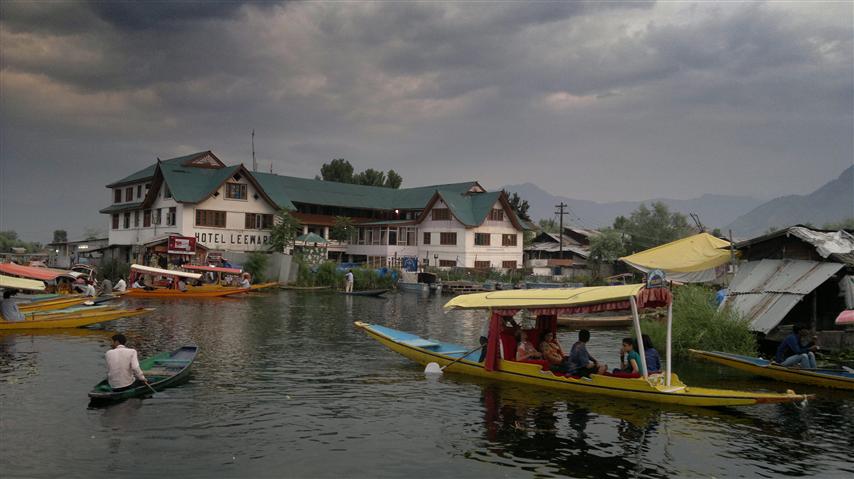
The best time to visit Jammu Kashmir is March and June or September and November.
This period covers three seasons in Kashmir i.e., spring (March-early May), summers (early May-late August) and autumn (September-November).
The blossoms of spring, the cool weather of summer and the gold and red hues of autumn all provide the peak season for Kashmir travel. From December to early March is the winter season for Kashmir, when the entire valley wears a white blanket of snow.
Home - Tour India - Jammu & Kashmir
................................................................................................................................................................................................................................................................................................................................................................................................................................................................................................................
Jammu & Kashmir

Copyright © visitindia.org.in. All Rights Reserved.
Best time to visit Jammu Kashmir
Travelogues/Travel Logs of Roadtrips
Hit the road with the summary guides of our trips to various places in India. Any information feel free to drop a mail at info@visitindia.org.in


Get online driving directions, route guides, weekend planners, and customised itineries. Check out a few of our favorite user road trips, then start an adventure of your own.....Explore India by Road

Find us :-
Dal Lake in Srinagar
Dal Lake is a lake in Srinagar, the summer capital of Jammu and Kashmir. The urban lake, which is the second largest in the state, is integral to tourism and recreation in Kashmir and is nick named the Jewel in the crown of Kashmir or Srinagar's Jewel. During the winter season, the temperature sometimes reaches -11 °C, freezing the lake. Fisheries and the harvesting of food and fodder plants are also important on Dal Lake. Weeds from the lake are extracted and converted into compost for the gardens. The houseboats on the Dal Lake are called floating palaces.
Kashmir is a treasure trove of handicarfts, from woodwork to pashmina shawls and papier mache to hand woven carpets. Shop at Lal Chowk and Badshah Chowk in Srinagar and Vir Marg also Raghunath Bazaar in Jammu.
Handmande carpets may be expensive but a lifelong investment, the yarn used normally is silk, wool or both. Namdas are less expensive are these colourful floor coverings made from woollen and cotton fibre which have been manually pressed into shape. Chain-stitch embroidery in woollen and cotton thread is executed on these rugs.
There are three fibres from which Kashmiri shawls are made - wool, pashmina and shahtoosh. The prices of the three cannot be compared - Woollen shawls being within reach of the most modest budget, and Shahtoosh being a one-in-a-lifetime purchase. Shahtoos is a banned commodity nowadays.
Woollen shawls are popular because of the embroidery worked on them, which is unique to Kashmir. Both embroidery and the type of wool used bring about differences in the price. Wool woven in Kashmir is known as raffel.
Pashmina is unmistakable due to its softness. Pashmina yarn is spun from the hair of goat found in the highlands of Ladakh, at 14,000 ft above sea level. It is on Pashmina shawls that Kashmir's most exquisite embroidery is executed, sometimes covering the entire surface, earning it the name of 'jamawar’.
Kashmir is the only part of India where the walnut tree grows. Its colour, grains and inherent sheen are unique and unmistakable, and the carving and fret- work that is done on this wood is of a very superior quality.

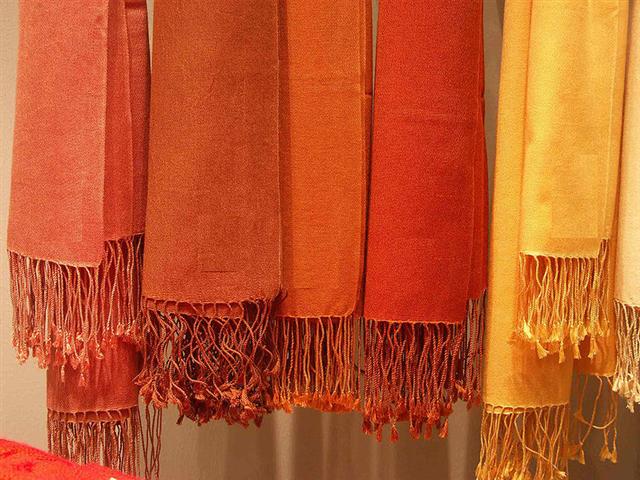




Amarnath cave
The Amarnath cave shrine is situated in Anantnag district of Kashmir. This important shrine situated about 48 kms from Pahalgam, located at an altitude of about 13,000 feet, from sea level attracts devotees from all over India. The shrine dedicated to Lord Shiva is believed to be his abode. The yatra starts from Pahalgam, offering the scenic beauty of Chandanwari, Sheshnaag and Panchtarni.
Extending upto 130 feet, the cave is high and shallow.
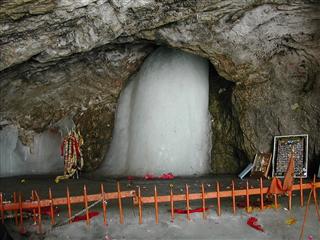
en.wikipedia.org

The followers often walk 13.5 kms from Katra, barefoot. In the mid-way, there is an important temple at Ardhkunwari, a major centre of respect, as the goddess is supposed to have spent nine months on her journey up the mountain. The cave shrine is narrow and the pilgrims have to walk through a running stream of cold water, “Charan Ganga”, to get to the temple. In the temple are the three rock-cut idols of goddesses “Mahakali”, “Mahalakshmi” and “Mahasaraswati”. Canopies of silver and gold adorn the idols. Coconuts and scarves are offered. A visit to the temple of Bhairon is an obligatory part of the pilgrimage.
Skiing in Gulmarg
Usually covered with 22-25 ft of soft snow the place provides some of the best and highest ski slopes in the world - for beginers as well as experienced skiers. There are a number of slopes of 200-300 metre runs for beginers but the more adventerous opt for the Afarwat hills slopes offering a 5km run. The peak at an altitude of 4,124 metres can be assessed by a gondola. From the peak it is possible to glide for over a couple of kilometers in either direction before descending the mountain.
Trek Leh to Stok (Stok-Kangri)
This is the most popular among the treks here. The trek takes you to India's highest trekable summit at 20,086 feet. The trek over four days touches two high passes at 17,000 feet before descending to 16.300 feet at the StokKangri base camp. July and August when the season is at its best, the days are warm and nights warmer compared to other places.
Inside a large opening, an underground trickle of water emerges 10 feet up from a small cleft in the sedimentary rock and freezes as it drips to form a tall, smooth cone of ice, which is believed to be a “Linga” of Lord Shiva’s ‘phallus’.
The Lingam acquires a full form on Purnima as on that day, Lord Shiva is believed to have revealed the secrets of life to his wife Parvati. On this day of full moon, the pilgrims walk from Pahalgam to view the pure white Linga and they also make offerings of food, money, sweets and flowers.
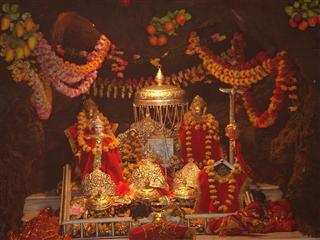
The temple of Vaishnodevi located in Jammu, is nearly 1100 feet above the surface level of the main city. It is a cave shrine, tucked away deep in the Trikuta Mountains of Kashmir and is an ultimate refuge of the helpless. It is one place that answers all your prayers and where all troubles are resolved. People come with faith to worship the Goddess and leave singing her praises.

A must try in Kashmir is the Wazawan, a multi course meal, in which most of the dishes are meat based. There can be as many as 36 dishes in Wazawan including Rista (meatballs), dum aloo and Gushtaba (meatball in yoghurt gravy). Try the Mughal Darbar in Srinagar.
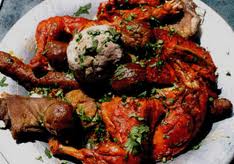
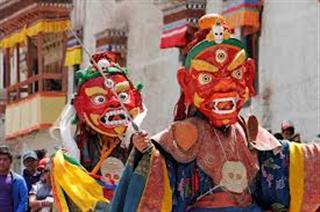
The Hemis festival is the biggest monastic festival in ladakh, celebrated in June.
500px.com





